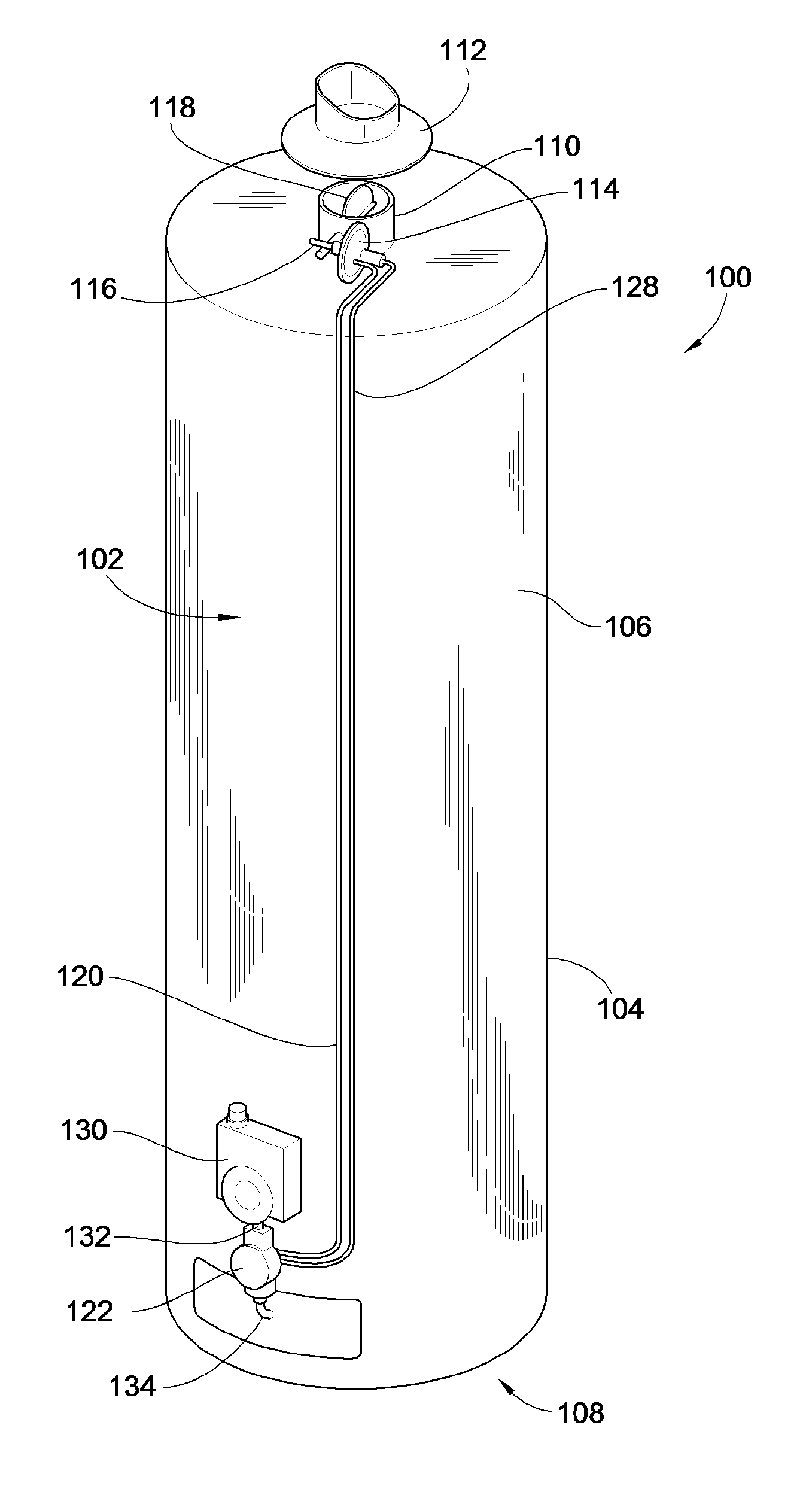System and Method to Reduce Standby Energy Loss in a Gas Burning Appliance
a technology of standby heat loss and gas burning appliance, which is applied in the direction of combustion process, furnace-tube steam boiler, lighting and heating apparatus, etc., can solve the problems of more fairly inefficient appliances in energy conservation, the overall service efficiency of the appliances, and the environment suffering too much from global warming, so as to reduce greenhouse gases, reduce standby heat loss, and operate more efficiently
- Summary
- Abstract
- Description
- Claims
- Application Information
AI Technical Summary
Benefits of technology
Problems solved by technology
Method used
Image
Examples
Embodiment Construction
[0037]Turning now to the drawings, there is illustrated in FIG. 1 an indoor hot water heater 100 such as typically installed in dwellings in the North American market having installed thereon an embodiment of the standby heat loss control system 102 of the present invention. It should be noted that while the following description will discuss various embodiments of the present invention, such embodiments and operative environments to which these embodiments find particular applicability are provided by way of example and not by way of limitation. For example, the embodiment illustrated in FIG. 1 having the components of the standby heat loss control system 102 exposed, such as in a retrofit installation on an existing hot water heater 100, may instead in a different embodiment have one or more of such components and plumbing integrated into the combination gas controller 130 and / or housing 104 such that they are not visible to the consumer. Embodiments of the present invention may a...
PUM
 Login to View More
Login to View More Abstract
Description
Claims
Application Information
 Login to View More
Login to View More - R&D
- Intellectual Property
- Life Sciences
- Materials
- Tech Scout
- Unparalleled Data Quality
- Higher Quality Content
- 60% Fewer Hallucinations
Browse by: Latest US Patents, China's latest patents, Technical Efficacy Thesaurus, Application Domain, Technology Topic, Popular Technical Reports.
© 2025 PatSnap. All rights reserved.Legal|Privacy policy|Modern Slavery Act Transparency Statement|Sitemap|About US| Contact US: help@patsnap.com



